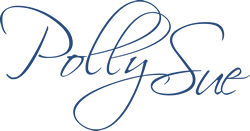Through the Looking Glass
I have always loved books and stories about magical portals or secret passageways to another world: Alice and her looking glass, Diggory’s wardrobe, Platform 9 ¾, Jack’s Beanstalk, Percy’s Hollywood studio…and, I guess, Dorothy’s visit to OZ, although I’m not sure the tornado counts as a magical portal. It is the discoveries the characters make when they enter the secret place and emerge changed that seduces my interest. I can’t help but wonder who I might become if I took hold of the yellow ring, or tessered into a wrinkle in time. I love the way a character is transformed once they’ve been transported and returned — changed, somehow. Smarter. Curiouser. Braver. Kinder.
Books, in and of themselves, are magical doorways. In fact, the portal to the Neverending Story is a book titled “The Neverending Story”. Doorways within books are something special. A character who passes through a magical doorway into a world of adventure mirrors the adventure of the reader themselves. They charm and intrigue us as readers. What if a library held not only books but also a magical door? In The Last of the Really Great Whangdoodles by Julie Andrews Edwards, a professor teaches some children how they can get to another land by using their imaginations and being aware and open to possibilities, aided by special hats that are “sympathetic to the brain’s impulses and desires.” Imagine a THING that can read your secret wishes or impulses or desires. Imagine a portal that will take you to your secret wishes and impulses and desires. Imagine a place that allows you to drink time from another era.
Last fall we were lucky enough to acquire such a magical doorway for our school library. At first look it’s nothing special — just a 1950’s era wooden phone booth, missing the phone — but now I can create my own Magical Portal to the past…or a travel pod (spaceship?) to the future. It’s a Tardis. A Delorean. A bridge to Terabithia. A Window. Sydney J. Harris, a journalist for the Chicago Sun-Times, said that “the whole purpose of education is to turn mirrors into windows.” I think the phone booth is the perfect vehicle for both.
I first learned about repurposed phone booths here. Shortly afterward, a colleague wanted to create something similar in honor of Martin Luther King Day, inspired by the phone call between JFK and Ernest Vandiver, the Governor of Georgia. My students created a Civil Rights Story, from Rosa Parks to Colin Kaepernick. Students curated content that transformed information into a new understanding. They incorporated technology with QR codes that one scans with a phone to pop up a video or article, as well as a Youtube playlist to “call up history“. This installation was interesting because it brought the past forward to the contemporary conversation about Civil Rights in America. It was filled with voices of freedom. Struggle. Courage. Overcoming adversity. The American Dream. The project was featured by a local news station.
Local students honor Black History Month with a piece of the past
Since then, the phone booth has been used by other student groups to educate and embrace Diversity, Equity, & Inclusion, from a Día de Muertos altar to a celebration of PRIDE week! We’re looking forward to a Voting Booth for Women and a visit to Laramie, Wyoming.
The role of the school library is changing — technology is a new literacy, every bit as important as traditional classroom teaching. How can we empower our students to be better consumers of digital information and to apply new understanding to old ideas? The phone booth is one way. This addition teaches students to employ skills that transfer across all platforms, tools, and media. It allows for a multiplicity of media types, communication of information, and interplay or interaction between multiple literacies and media. Transliteracy is 3-Dimensional. Traditionally, we try to raise student skill-levels to match our resources, or we try to adjust our resources to match students’ skill-levels. The addition of the phone booth encourages this interaction, interplay, and integration. The phone booth is the perfect anchor for this interplay. This unique display featuring tiny museums fosters critical thinking because students will learn how to access and curate information and integrate technology to bring displays to life. For these projects, students are required to look beyond a superficial understanding and how to evaluate content to be included in the museum. Stay tuned.
















